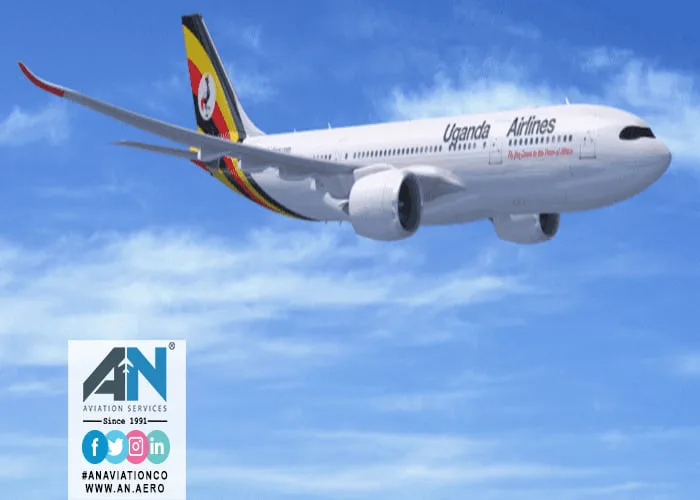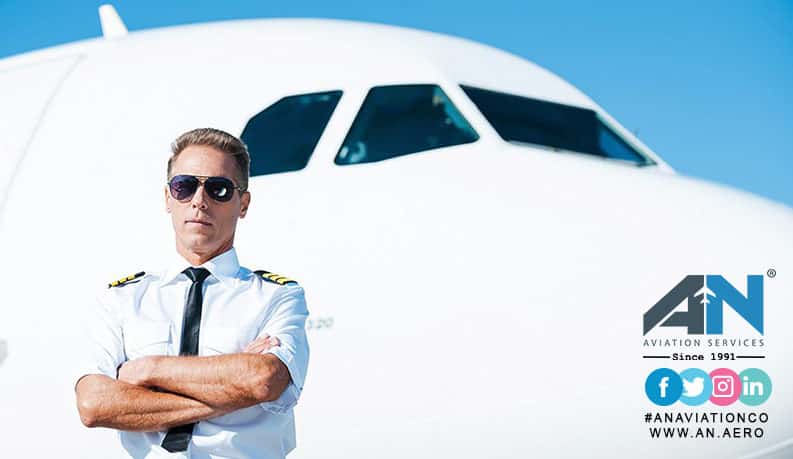
The Boeing 737 is one of the most iconic narrowbodies in the sky. Since the late 1960s, the aircraft has flown for an incredible number of airlines and has seen many subsequent generations.
However, despite numerous technological and comfort improvements, the 737 has always had one distinct feature; the aircraft has always been so low to the ground. Here is why that is so.
The original design
Back when the 737 was conceived, the plane was intended to be more of a regional hopper. For larger routes, Boeing already offered the 727. However, airlines needed a plane that served the 100-seat range. To fill this niche, Boeing built the 737.
In its first generation, there were two versions. The smaller 737-100 and the larger 737-200, first flew in United colors.
Lufthansa was the launch customer of the 737-100. They primarily used the 737-100 for short-haul hops across Europe. The aircraft was perfect for small routes that didn’t need the large capacity of the 727. However, there was one thing in particular that the 737 needed to have: low clearance.
The low clearance factor
Today, we know pre-departure operations to include the following:
In most cases, a jet bridge is used to board an aircraft, Motorized baggage belts that could be used to load and unload the hold, Large catering trucks that can adjust their height to easily service an aircraft. If needed, high-tech maintenance operations that include the use of lifts, etc.
The LA Times reports that in 1968 that wasn’t the case. Passengers would board using stairs. Bags and cargo would be loaded and unloaded by hand. Likewise for catering. And maintenance personnel found it easier to perform servicing tasks on lower engines.
Why has it stayed the same?
Boeing’s 737s come in a few different series. There are the original Boeing 737s, the 737 Classic series, the 737 Next Generation Series, and the now infamous 737 MAX. In each subsequent design, Boeing retooled and reworked the aircraft without making major changes; that is until the 737 MAX came around.
Airlines like taking delivery of new planes without having to go through the headaches and growing pains of inducing a new aircraft type into their fleet. As a result, if a 737-200 is swapped for a 737-300 or a 737-400 is swapped for a 737-800, airlines want to be able to quickly add the new aircraft to service.
Boeing, also, wants to get the new aircraft certified quickly in an effort to boost sales and beat the competition. Even as airport infrastructure has grown, there are some airports that aren’t capable of handling aircraft at jet bridges.
Low-cost carriers also like the lower clearance of the 737 since they can use airstairs for boarding and deplaning. This, in turn, helps lower their costs.
Will the design stay the same?
Boeing will inevitably have to produce a new narrowbody. There is only so much you can do with such an old design and, with the issues the 737 MAX faced, it is highly unlikely that Boeing or airlines would want to order another iteration of the 737 based on the original 1960s design.
Barring any major technological advances, if Boeing produces a new aircraft, they will likely increase the ground clearance in an effort to better tailor the aircraft for the future.
Overall
The 737 is an iconic aircraft. Every major U.S. carrier operates various iterations of the 737. However, one of the biggest problems with the future of the 737 rests in the low ground clearance. In the 1960s, this design was perfect. Now, that could change as the aviation world moves towards smaller planes flying longer routes safely.
landing gear doors
The aircraft’s main landing gear wheels are not covered, and they remain exposed even when fully retracted. The nose wheel, on the other hand, is covered.
Given the lack of space under the plane, while it’s on the ground, Boeing engineers determined that landing gear doors were impractical and unnecessary for the main undercarriage. Let me explain These “holes” on the Boeing 737’s belly isn’t unique to the plane.
This is the earliest 737 model from the late 1960s:
The modern-day 737–800 was built on the foundation of the first generation, retaining much of the original structural design, even as the 737’s role evolved from a short-range, domestic aircraft to now a medium-, and even long-range, airliner flying transatlantic missions, for example.
With the exception of the 737 Max, every 737 fitted with high-bypass turbofan engines will have engine inlets that are slightly ovoid to provide sufficient clearance between the engines and the ground.
In the 1960s, Boeing positioned the 737 as an airliner that could serve small, domestic airports. Unlike major international airports, domestic aerodromes in those days didn’t have sophisticated facilities, such as airbridges, cargo loaders, and belt loaders that could reach high places.
Therefore, Boeing decided to make the 737 as low to the ground as possible. This allowed baggage handlers to load luggage without requiring much ground support equipment, and to climb into the cargo hold to load, organize and retrieve the bags.
The plane could be refueled and serviced using smaller domestic airport trucks, and ground staff would not need to use lifting platforms to access the valves and servicing panels on the underside of the aircraft.
Passengers will board and disembark the 737 using airstairs, rather than airbridges. Since the plane was deliberately designed to be below, there wasn’t enough space under the aircraft to accommodate wheel well doors for the main landing gear.
If implemented, the doors will likely come in contact with the runway, taxiway, or apron surface should they be deployed on the ground. When the plane is in motion, it could potentially scrape the asphalt or concrete and cause damage.
You might be thinking — but the doors will never be actuated on the ground, only in the air. It’s important for Boeing to ensure absolute safety in the design of its airplanes. There had been numerous incidents where the landing gear failed to deploy, resulting in emergency belly landings.
The landing gear is susceptible to failure, and so are its doors. If the 737 were to be equipped with landing gear bay doors, and they fail to close up before landing, things wouldn’t be good when the plane touches down.
The Boeing 737 is one of the most iconic narrowbodies in the sky. Since the late 1960s, the aircraft has flown for an incredible number of airlines and has seen many subsequent generations.
However, despite numerous technological and comfort improvements, the 737 has always had one distinct feature; the aircraft has always been so low to the ground. Here is why that is so.
The original design
Back when the 737 was conceived, the plane was intended to be more of a regional hopper. For larger routes, Boeing already offered the 727. However, airlines needed a plane that served the 100-seat range. To fill this niche, Boeing built the 737.
In its first generation, there were two versions. The smaller 737-100 and the larger 737-200, first flew in United colors.
Lufthansa was the launch customer of the 737-100. They primarily used the 737-100 for short-haul hops across Europe. The aircraft was perfect for small routes that didn’t need the large capacity of the 727. However, there was one thing in particular that the 737 needed to have: low clearance.
The low clearance factor
Today, we know pre-departure operations to include the following:
In most cases, a jet bridge is used to board an aircraft, Motorized baggage belts that could be used to load and unload the hold, Large catering trucks that can adjust their height to easily service an aircraft. If needed, high-tech maintenance operations that include the use of lifts, etc.
The LA Times reports that in 1968 that wasn’t the case. Passengers would board using stairs. Bags and cargo would be loaded and unloaded by hand. Likewise for catering. And maintenance personnel found it easier to perform servicing tasks on lower engines.
Why has it stayed the same?
Boeing’s 737s come in a few different series. There are the original Boeing 737s, the 737 Classic series, the 737 Next Generation Series, and the now infamous 737 MAX. In each subsequent design, Boeing retooled and reworked the aircraft without making major changes; that is until the 737 MAX came around.
Airlines like taking delivery of new planes without having to go through the headaches and growing pains of inducing a new aircraft type into their fleet. As a result, if a 737-200 is swapped for a 737-300 or a 737-400 is swapped for a 737-800, airlines want to be able to quickly add the new aircraft to service.
Boeing, also, wants to get the new aircraft certified quickly in an effort to boost sales and beat the competition. Even as airport infrastructure has grown, there are some airports that aren’t capable of handling aircraft at jet bridges.
Low-cost carriers also like the lower clearance of the 737 since they can use airstairs for boarding and deplaning. This, in turn, helps lower their costs.
Will the design stay the same?
Boeing will inevitably have to produce a new narrowbody. There is only so much you can do with such an old design and, with the issues the 737 MAX faced, it is highly unlikely that Boeing or airlines would want to order another iteration of the 737 based on the original 1960s design.
Barring any major technological advances, if Boeing produces a new aircraft, they will likely increase the ground clearance in an effort to better tailor the aircraft for the future.
Overall
The 737 is an iconic aircraft. Every major U.S. carrier operates various iterations of the 737. However, one of the biggest problems with the future of the 737 rests in the low ground clearance. In the 1960s, this design was perfect. Now, that could change as the aviation world moves towards smaller planes flying longer routes safely.
landing gear doors
The aircraft’s main landing gear wheels are not covered, and they remain exposed even when fully retracted. The nose wheel, on the other hand, is covered.
Given the lack of space under the plane, while it’s on the ground, Boeing engineers determined that landing gear doors were impractical and unnecessary for the main undercarriage. Let me explain These “holes” on the Boeing 737’s belly isn’t unique to the plane.
This is the earliest 737 model from the late 1960s:
The modern-day 737–800 was built on the foundation of the first generation, retaining much of the original structural design, even as the 737’s role evolved from a short-range, domestic aircraft to now a medium-, and even long-range, airliner flying transatlantic missions, for example.
With the exception of the 737 Max, every 737 fitted with high-bypass turbofan engines will have engine inlets that are slightly ovoid to provide sufficient clearance between the engines and the ground.
In the 1960s, Boeing positioned the 737 as an airliner that could serve small, domestic airports. Unlike major international airports, domestic aerodromes in those days didn’t have sophisticated facilities, such as airbridges, cargo loaders, and belt loaders that could reach high places.
Therefore, Boeing decided to make the 737 as low to the ground as possible. This allowed baggage handlers to load luggage without requiring much ground support equipment, and to climb into the cargo hold to load, organize and retrieve the bags.
The plane could be refueled and serviced using smaller domestic airport trucks, and ground staff would not need to use lifting platforms to access the valves and servicing panels on the underside of the aircraft.
Passengers will board and disembark the 737 using airstairs, rather than airbridges. Since the plane was deliberately designed to be below, there wasn’t enough space under the aircraft to accommodate wheel well doors for the main landing gear.
If implemented, the doors will likely come in contact with the runway, taxiway, or apron surface should they be deployed on the ground. When the plane is in motion, it could potentially scrape the asphalt or concrete and cause damage.
You might be thinking — but the doors will never be actuated on the ground, only in the air. It’s important for Boeing to ensure absolute safety in the design of its airplanes. There had been numerous incidents where the landing gear failed to deploy, resulting in emergency belly landings.
The landing gear is susceptible to failure, and so are its doors. If the 737 were to be equipped with landing gear bay doors, and they fail to close up before landing, things wouldn’t be good when the plane touches down.
















